Maurice Morel
(1908-1991)
Western civilization owes a great deal to men of the cloth who made art. European culture would be considerably poorer had there been no ninth century Celtic monks to illuminate the pages of the Book of Kells or Fra Angelico to paint frescoes in the Friary of San Marco in early Renaissance Florence. Painter-priests are harder to come by in the modern era, but the Sacred Art Pilgrim collection holds works by one 20th century French Roman Catholic artist-clergyman: L’Abbe Maurice Morel. (Abbe, meaning "abbot," is a common form of address for French clerics.)
Morel is not so well known as his contemporary, Father Marie-Alain Couturier, the Dominican artist-priest who enlisted secular artists like Le Corbusier and Henri Matisse to create modern ecclesiastical works for the French Church in the 1940s-1950s. Unlike Couturier, Morel not only championed the cause of contemporary art in the church but made sacred art of his own all through his career, often working in a modernist style.
Born in Ornans in the Eastern French region of Franche-Comte, Morel came to Paris in 1927 to pursue his double vocation of artist and priest. He found a mentor in Artist-Poet Max Jacob, a Jewish convert to Catholicism, who was a close friend of Pablo Picasso and other artistic-literary notables of the period. In 1933, Morel helped stage a ground-breaking sacred art exhibition, Art Moderne d’inspiration religieuse, which included works by Picasso, Andre Derain, Tsuguhara Foujita, and Georges Rouault, who would become the priest's lifelong friend and supporter.
Morel was ordained in 1934 and joined Stained Glass Artist Jean Bazaine two years later in setting up an art studio as a Christian "presence" in the Surrealist art circles of the era. Decorated for his role in the French Resistance in World War II, Morel spent the post war years promoting modernist art both as an essay writer and public speaker. From 1960 onwards, he devoted himself almost exclusively to art-making, claiming it was time to let his art express what he could not say in words.
The artist-priest was drawn toward abstract expressionism, believing the most abstract works were also “the most concrete.” The two untitled mixed media paintings in the Sacred Art Pilgrim Collection are a good example of Morel's mature style, showing the influence of his close collaborators in sacred art-making, Bazaine and Abstract Painter Alfred Manessier. There are also several studies for non-figurative stained glass windows.
Most of the Morel pieces in the collection are representational drawings on sacred themes, sometimes sketched on the back of receipts and letters, which show the artist experimenting in a variety of styles. The delicate ink drawings recall the work of his mentor, Jacob, while some of the more expressionistic sketches show the influence of Rouault. One image of Christ with outstretched arms pays homage to El Greco. One mixed media painting of the instruments of Christ's Passion depicts nails, a hammer, and pliers as elements of an abstract composition.

Untitled Composition
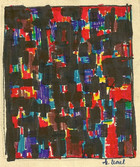
Untitled Composition II
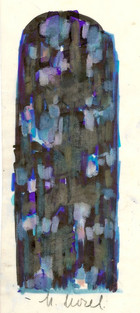
Stained Glass Study (blue, silver)
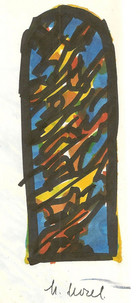
Stained Glass Study (yellow, orange)
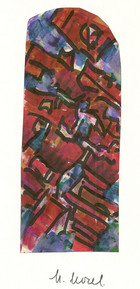
Stained Glass Study (red, blue)
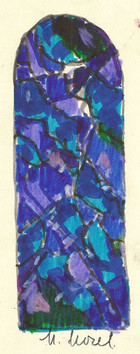
Stained Glass Study (blue, purple)
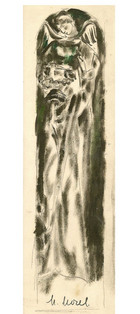
Stained glass study (Apostle & Angel)
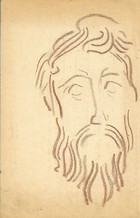
Head of Christ
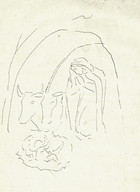
The Nativity I
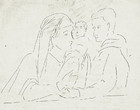
The Holy Family

The Parable of the Great Banquet
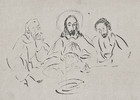
The Last Supper
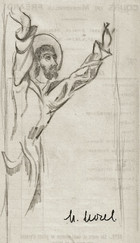
Christ in Prayer
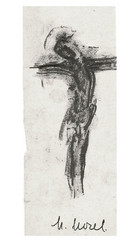
Christ on the Cross
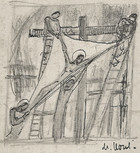
The Deposition
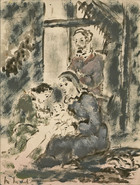
The Nativity II
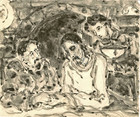
Supper at Emmaus
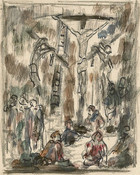
The Crucifixion
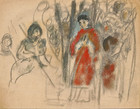
Liturgy I
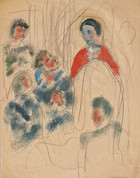
Liturgy II

